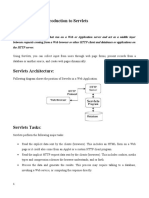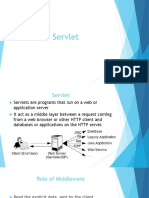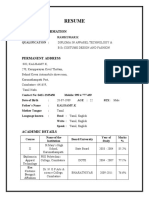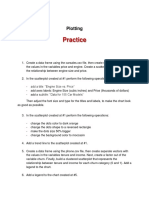0% found this document useful (0 votes)
33 views5 pagesFull Servlets Detailed Notes
The document provides an overview of Servlets in Java, explaining their purpose, lifecycle, and basic syntax. It includes examples of simple servlet programs, HTTP request handling, session tracking, cookie management, and JDBC integration. Additionally, it covers servlet configuration and context, as well as the use of filters in servlet processing.
Uploaded by
Nikhil KarnatiCopyright
© © All Rights Reserved
We take content rights seriously. If you suspect this is your content, claim it here.
Available Formats
Download as PDF, TXT or read online on Scribd
0% found this document useful (0 votes)
33 views5 pagesFull Servlets Detailed Notes
The document provides an overview of Servlets in Java, explaining their purpose, lifecycle, and basic syntax. It includes examples of simple servlet programs, HTTP request handling, session tracking, cookie management, and JDBC integration. Additionally, it covers servlet configuration and context, as well as the use of filters in servlet processing.
Uploaded by
Nikhil KarnatiCopyright
© © All Rights Reserved
We take content rights seriously. If you suspect this is your content, claim it here.
Available Formats
Download as PDF, TXT or read online on Scribd
/ 5


















































































